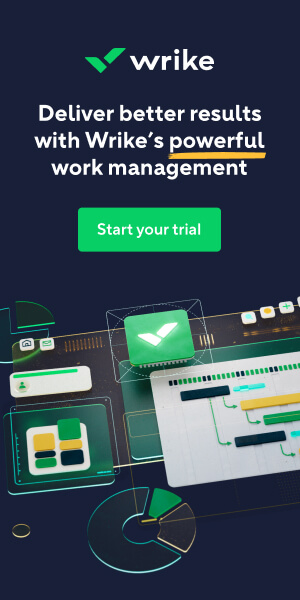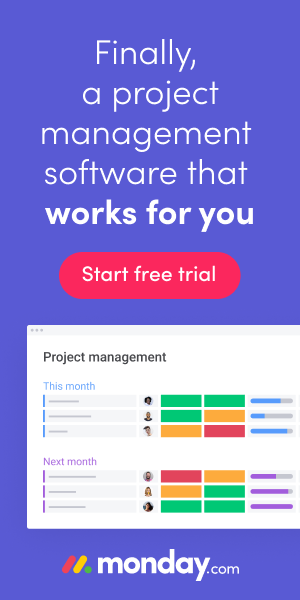One popular definition of project management is the practice of planning, allocating, and adjusting resources to efficiently and sustainably achieve project goals. Companies with more mature PM practices, such as those using project management software, are more likely to meet their project goals than organizations without those practices.
Table of Contents
- Project Management Software As a Solution
- Best Project Management Software for 2023
- What to Look for in Project Management Software
- Do’s and Don’ts of Buying Project Management Software
- Ready to Try Project Management Software?
Project Management Software As a Solution
Project management software enables users, teams, and companies to plan, organize, and manage projects. Because project managers typically oversee multiple projects simultaneously, having a system with the right project management features in place is crucial to consistent project success. Teams need project management software when:
- The team is starting to miss project deadlines frequently
- Existing tools like spreadsheets give more confusion than information
- Team members fail to communicate with one another, resulting in redundant work or rework
- Project managers are unable to effectively report the current status of the project
Best Project Management Software for 2023
What to Look for in Project Management Software
Organizations can easily arrive at a decision to buy a project management solution, but given the many options available, actually selecting the right one is a challenge. For example, some project management software is packaged with additional functionality like invoicing. There are also non-PM systems (like CRM) that come with integrated project management features. Some of the important functions of PM software are:
- Centralized document management
- Real-time project and task tracking and reporting
- Task creation, scheduling, and delegation
- ivity monitoring and measurements
- Budget management and cost tracking
- Real-time communication and notification
- High accessibility and reliability
So how does a buyer safely navigate through these choices?
Do’s and Don’ts of Buying Project Management Software
The following is a simple guide to help a company narrow down a list of potential solutions, so they can determine the one that meets their exact business and project management software requirements.
The Don’ts
Don’t select the cheapest option before factoring in customer support.
Many PM software products have attractive prices and the functionality a team needs to manage their projects successfully. However, buyers need to also go beyond the project management software features list and check the support that comes with their chosen service tier. It is possible that some vendors will only offer the most basic support, such as a self-serve help portal.
Aside from the type of support available, buyers need to check the availability of that support and the response time commitment. Is customer support available 24/7? Will they get back to you within an hour or a day? It would be unfortunate for a company to realize that they need to buy a separate customer support package at a premium because the software is not performing as expected.
Read more: Understanding the Different Levels of Help Desk Support
Don’t ignore the complete cost of ownership.
The complete or total cost of ownership includes the initial purchase price plus the additional costs of operation. Most project management software today are cloud-based, software-as-a-service (SaaS) solutions. Companies can subscribe on a monthly basis or a yearly basis in most cases, where vendors offer some discount when customers pay for the whole year up front. The fees charged by SaaS solutions usually include maintenance and upgrades, so the software provider keeps customer data safe and available with minimal to no additional expense on the part of the customer.
Buyers need to check whether pricing is a flat rate for unlimited users, charged per a set number of users (like groups of five), or on a per-user basis. Another thing to consider is pricing scalability, or the need in the foreseeable future for more advanced features — whether as premium add-ons or higher-tiered plans. Your company should evaluate this information and compare it with how they plan to grow, so they can forecast the most economical choice. Other factors to consider are the need and cost of integration to other existing or future systems, and the cost of service disruption through an SLA.
Don’t overlook the time needed to launch new software.
The user interface of project management software is not standardized, and can come in various designs. Some are simple and intuitive, while others are feature-rich and complex to navigate. New teams may need to spend time familiarizing themselves with the product, which can delay them from getting involved in actual, revenue-generating company projects. For companies that are replacing an old system with new project management software, teams need to make adjustments and re-orient themselves in how they enter data, view information, and generate reports.
There will be a learning curve where performance will initially dip until it returns or exceeds previous levels. This time of familiarization, training, and adjustments also has a corresponding cost to the business.
Read more: Project Management Time Constraints
The Do’s
Do ask vendors what’s included in each pricing tier.
Buyers should ask project management software vendors for a clear description of every feature in the different pricing plans. This will allow buyers to make a better comparison between products and gain an idea of what exact features they are getting or missing. For instance, some plans can be slightly expensive but could provide extended capabilities that produce additional business opportunities or added value for companies’ own customers.
Do find out if onboarding support and training is offered.
Some vendors include onboarding support for new users. Others offer free user training on-site or online, while some arrange for a dedicated customer success representative to be assigned to the buyer company. Others provide these services at a premium, or restrict these services to enterprise pricing tiers. Buyers need to factor in all these considerations when calculating the total cost of investing in new project management software.
Do demo your software choices.
Most vendors offer methods to provide potential buyers a test drive of their proposed solution. This can be through a limited free trial the buyers access and use with their own data. Other vendors offer access to a functional system with pre-loaded data that buyers can manipulate to gauge performance and function. It is a good strategy to compare several shortlisted software candidates in actual use cases, while taking specific measurements for a realistic comparison. This will give valuable data for buyers to choose their preferred system.
Read more: Demo vs Proof of Concept (POC) 2021
Ready to Try Project Management Software?
Project management software can simplify tasks and streamline processes so that users have better control, up-to-date information, and fewer risks as they manage and deliver projects. It is an innovative and evolving technology that your company should examine not only for its present capabilities, but also for future prospects.












